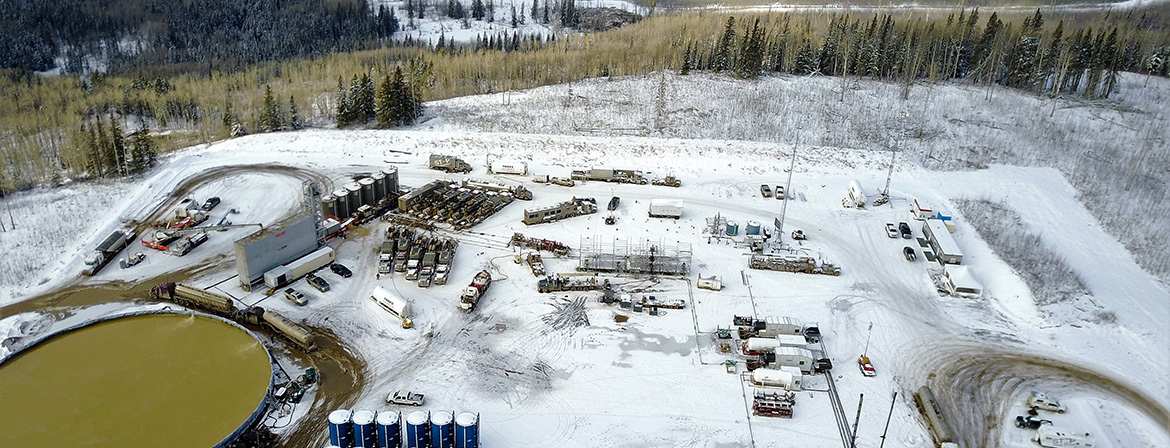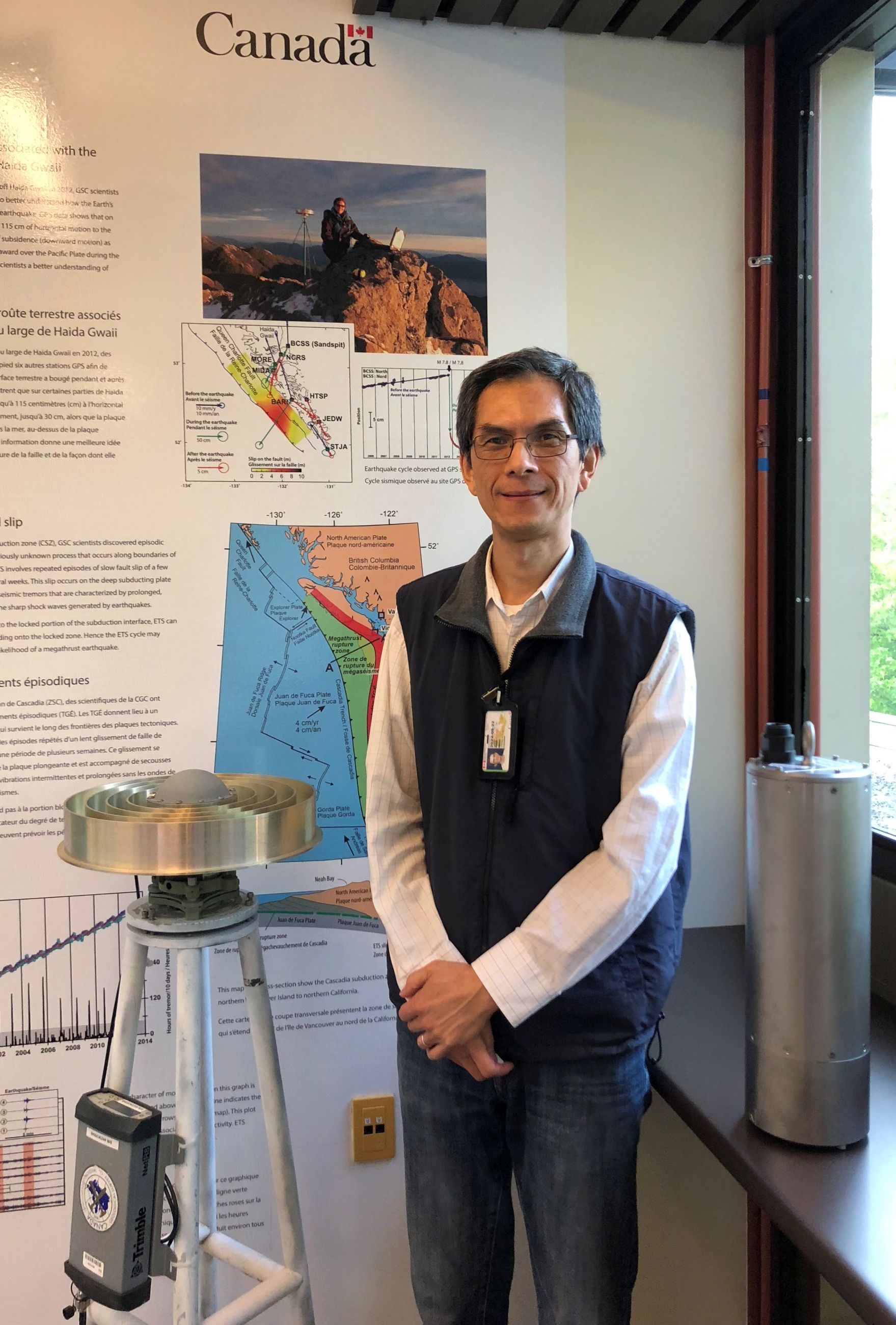
Larger image
Credit: BC Oil and Gas Commission
By Vanessa Greebe
January 10, 2019
New research increases understanding and has implications for industry and regulators
Hydraulic fracturing — or fracking: the injection of pressurized liquids to fracture rock in the development of oil and gas wells — has dramatically different effects in different areas. It seldom induces earthquakes in Saskatchewan, for example — a province with a low earthquake hazard — but often does so in northern British Columbia, a seismically more active area.

Larger image
Dr. Honn Kao with GPS unit and seismometer
Scientists have long wondered, Why exactly does hydraulic fracturing cause earthquakes in some places but not in others? Now, Natural Resources Canada (NRCan) scientists are a step closer to the answer: new research has found a link between these induced earthquakes and the deformation rate of the tectonic plates — the massive, slowly moving slabs that underlie the earth’s continents and oceans — of the surrounding area.
“The background tectonic loading rate appears to be one of the predominant factors that control an area’s response to injection-induced earthquakes,” explains Honn Kao, a seismologist at NRCan’s Pacific Geoscience Centre in Sidney, British Columbia. The tectonic motions in plate boundary zones slowly increase the elastic deformation (also known as strain) along intraplate faults, and the delicate balance between these stresses can be disturbed by the forceful injection of the liquids used in fracking, causing an earthquake that releases the accumulated tectonic energy.
For the first time, researchers have tracked the earth’s geodetic measurements to verify the link between deformation rates and injection-induced earthquakes (IIE). Using a GPS-type of technology together with existing knowledge of tectonic plate boundaries, scientists followed IIEs and noticed a pattern.
The majority of induced earthquakes occurred in an area where the tectonic strain rate is relatively large — a 150 km-wide band immediately to the east of the Canadian Rocky Mountains, essentially the border between British Columbia and Alberta. Farther to the east, where the geological deformation rates are low, earthquakes of this type are much less frequent. These findings are now published in Geophysical Research Letters.
As a result of this research, seismologists now know that there is no one-size-fits-all approach to the regulation of hydraulic fracturing: the regional tectonic background has to be considered.
As well as being of scientific interest, this finding is of great practical importance to the regulators who oversee hydraulic fracturing, since the volume of the hydraulic fluid injection will affect the size of the induced earthquake. Knowledge of this connection marks an important first step for the ability of hydraulic fracturing operators to avoid larger, damage-causing earthquakes by controlling injection operations.
The results of the link first established by NRCan researchers between hydraulic fracturing and induced earthquakes in Canada were published in the Canadian Journal of Earth Sciences in 2015.